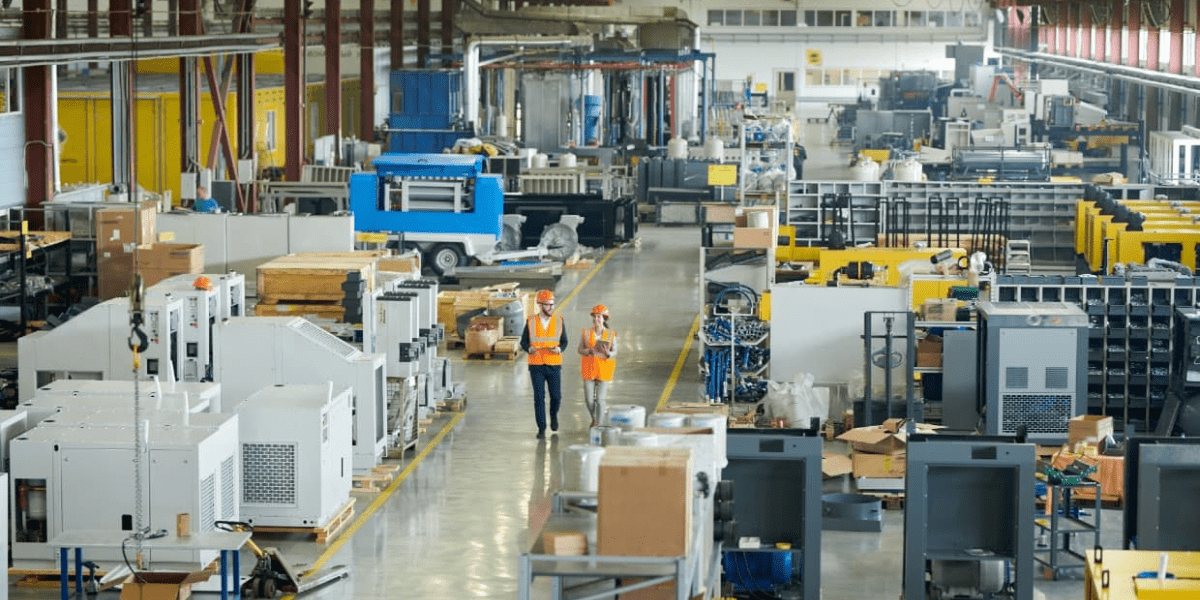What Is Plant Maintenance?
For facility operations and its clients, the need for equipment reliability, streamlined operations, and efficient machine and inventory procedures has never been greater than it is now. Manufacturers are continuously looking for improved margins and bottom-line gains, while customers are increasingly looking for higher quality at lower prices. Plant maintenance is one method of assisting manufacturers in meeting these objectives.
What exactly is plant maintenance? It is a multifaceted, integrated strategy that focuses on increasing productivity by increasing equipment uptime, increasing overall equipment effectiveness (OEE), improving inventory management, and introducing automation — all while keeping costs to a bare minimum in order to meet these production and quality goals
Challenges in Plant Maintenance?
Maintenance work in the manufacturing industry is never easy. Depending on the context of the manufacturing process, each business has a unique set of requirements. One issue is that there are constant resource limitations and increased workloads, but there is also ongoing pressure.
There are numerous approaches to overcoming the most difficult maintenance difficulties in manufacturing. With technology evolving and numerous maintenance processes, such as predictive maintenance are improving with time.
Increasing Operational Efficiency
One of the most difficult issues for modern production maintenance teams is enhancing operational efficiency and reducing downtime. Inaccurate weather forecasts, production delays, and even unanticipated complications caused by human error can be a major issue.
Maintenance management teams must strike a mix between predictive, corrective, preventative, and even replacement operations. This will enable management to maximize asset productivity throughout the medium to long term at the lowest possible cost.
To address these difficulties, businesses must provide their maintenance managers with in-depth knowledge of their equipment and facilities. Asset specifications, OEM recommendations, manuals, and even guarantees should all be included in the knowledge. These should aid in the development of effective maintenance plans over time.
Lack of Standard Procedures
Maintenance procedures are an important aspect of the manufacturing business and are followed on a regular basis. However, the problem with most plants is a lack of guidelines in this area. Sure, some guidelines assist organizations to reduce their use of plastic, but there are rarely, if ever, maintenance standards.
The lack of consistent methods and the variety in maintenance requirements for each piece of equipment might cause teams to waste time. Standard operating procedures (SOP) must codify and specify all maintenance operations, answering the “what, who, when, and how” of the entire process.
To reduce the ambiguity of the entire maintenance process, businesses would need to utilize SOP. Standards can also ensure that everything is replicable for other teams, allowing for faster and easier work.
Operational Costs
Many maintenance managers strive to keep their overall costs under control. Companies often allocate no more than 5 to 10% of their overall budget to maintenance. Depending on the size of the organization, this may be a pittance that will not provide the necessary upkeep.
As a result, the company’s maintenance is inadequate, with only enough resources to do reactive maintenance to keep its assets operational. While some manufacturing equipment just requires reactive maintenance, large equipment requires preventive maintenance to function.
By streamlining your maintenance duties, you may keep your maintenance budget under control. You can reduce costs by simplifying the entire process and eliminating any needless processes. Streamlining varies per firm, but you want a process that takes no more than a half-dozen steps at most.
Cross-Functional Teamwork
It needs teamwork to effectively manage a team and ensure that it runs smoothly every time. Coordination is difficult, especially for groups with embedded functional categories and their own culture within the industrial plant.
Combining teams with shared obligations to keep the company’s assets in functioning order is likely to cause problems for business owners. It’s also possible that teams don’t contact each other beyond the few exchanges required at work.
To improve maintenance operations, it is critical to build teamwork and camaraderie across functional categories. Because maintenance relies heavily on information sharing across teams, the organization must establish rally points to decrease operational costs and establish new channels of communication.
What Is CMMS Software?
A CMMS, or Computerized Maintenance Management System, is maintenance software that manages assets, work orders, inventories, preventative maintenance, condition monitoring, and other aspects of maintenance.
A CMMS functions as a command and control center for maintenance and reliability programs. It also serves as a centralized database for storing critical information. CMMS software is used by maintenance teams to track their work and obtain insight into machine health and reliability, making it suitable for managing industrial facilities with important machine assets.
The use, availability, and life span of equipment, machinery, fleets, infrastructures, facilities, or operations are all optimized using CMMS software. Cloud-based CMMS solutions are now available, and they include novel features such as a mobile CMMS app, regulatory compliance tools, and multi-site or multilingual capabilities. They can also interact with applications such as ERP purchasing software or access siloed production data from SCADA, PLC, and BMS systems. Leading CMMS platforms can even communicate with condition monitoring sensors and software, giving teams predictive maintenance capabilities.
All of the categories of CMMS system, solution, platform, and software are interchangeable; they all relate to digital solutions for maintenance management. Organizations can use CMMS software to save time, simplify their job, prevent downtime, save maintenance costs, and improve asset reliability.
How CMMS Software Can Resolve The Challenges of Plant Maintenance?
Reduced downtime
Downtime is one of the most significant inefficiencies in manufacturing and industry, causing production backlog while increasing the enormous expenses of idle equipment. Through a thorough, holistic approach to maintenance that adds more proactive techniques that offer data and knowledge with which to act, plant maintenance drills in on the reasons of unexpected downtime, typically decreasing these incidents to near-zero.
More control over maintenance
Plant maintenance, by attempting to remove merely reactive maintenance, gives facility managers, operators, and maintenance employees far better control over maintenance expenditures and planning. Plant maintenance achieves this in a variety of ways:
- First, by using sensors and data to predict prospective issues, workers can discover potential issues well before they cause shutdowns and downtime, and then schedule corrective maintenance tasks to have the least impact on output.
- Second, by following a precise preventive maintenance schedule, the basis is laid for proactive maintenance, and procurement can make orders and keep inventories more accurately.
- Finally, by decreasing or eliminating unexpected downtime, the requirement for costly emergency maintenance ordering and repairs is greatly reduced.
Higher production quality
Plant maintenance results in the following benefits by bringing equipment closer to optimal functioning order:
- Improved manufacturing quality
- Improved repeatability
- There are fewer part faults and rejections.
- There is less need for rework or secondary remedial processes.
- A general increase in manufacturing methods and efficiency
Increased production quality not only increases facility efficiency, but it also makes customers considerably happier – especially when supplied on time and on budget.
More targeted and efficient maintenance
Predictive maintenance has the advantage of addressing genuine maintenance concerns before they cause downtime. While preventive maintenance is still an important stage in the process, it occurs whether or not it is required, potentially wasting time and money. Reactive maintenance, on the other hand, occurs only after a breakdown or malfunction has occurred, resulting in idle equipment, a hurry to fix, and lost production time and profit.
More accurate and efficient inventory systems
Because of the efficiency and productivity improvements it can give, storeroom management is an important component of plant maintenance. Inventory systems are frequently influenced and improved after a plant maintenance plan is introduced, due to the inherent problems in maintaining an efficient inventory plan on an ad hoc or under-resourced basis that occurs at so many facilities.
Inventory is extremely important in plant maintenance since precise part counts, spare part availability, a central, organized inventory location, and fast, effective repairs are all required. The return on investment provided by a good inventory system justifies any increased resource expenses associated with managing these systems.

